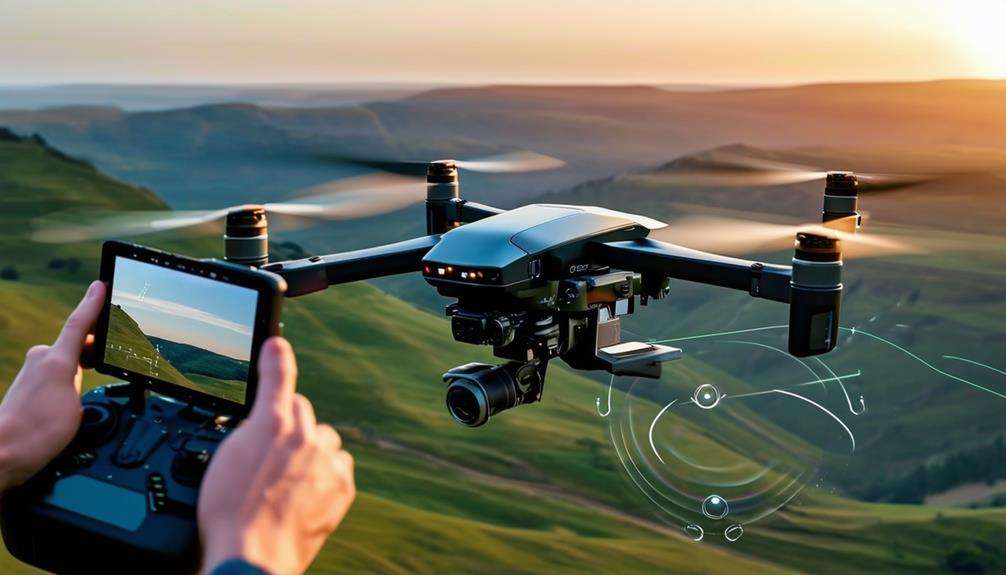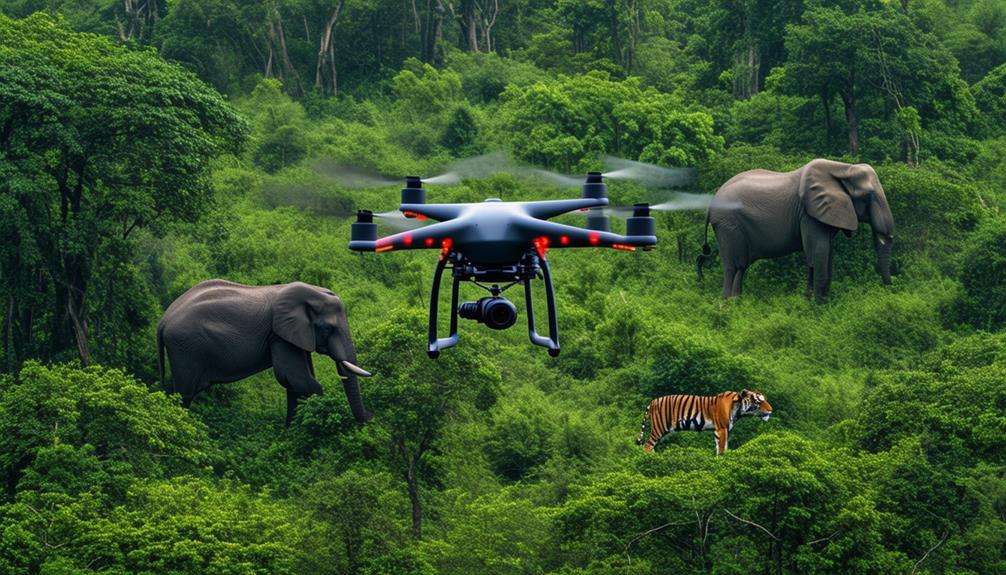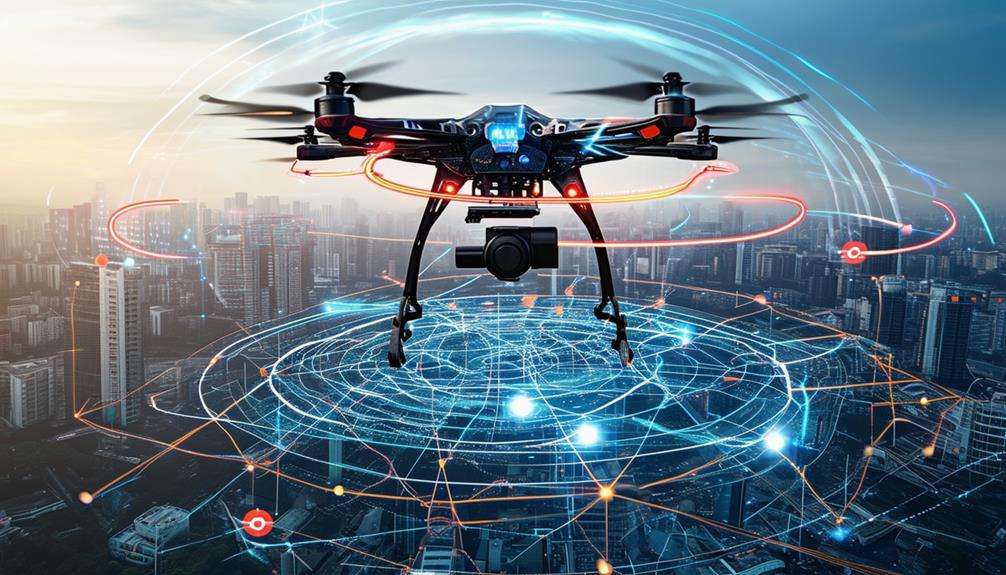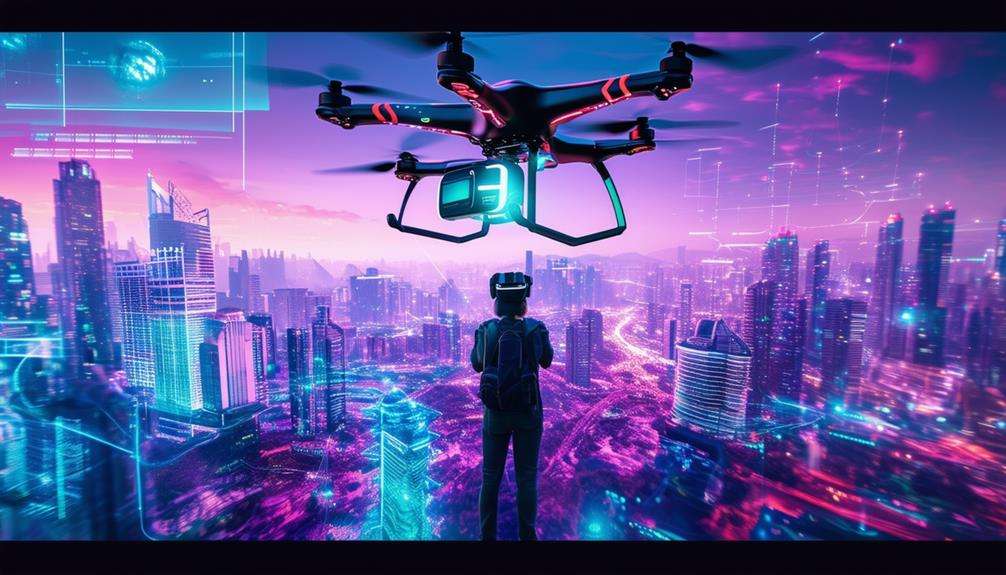Drones in Space Exploration: Beyond Earth

When you think about space exploration, you might picture astronauts and rovers, but have you considered how drones are transforming this field beyond Earth?
These advanced devices, equipped with high-resolution cameras and sophisticated navigation systems, are now essential for mapping planetary surfaces and collecting atmospheric data. They've overcome the challenges posed by extreme environments through innovative materials and specialized techniques.
But how exactly do they function in such harsh conditions, and what makes them crucial for future missions?
Evolution of Space Drones
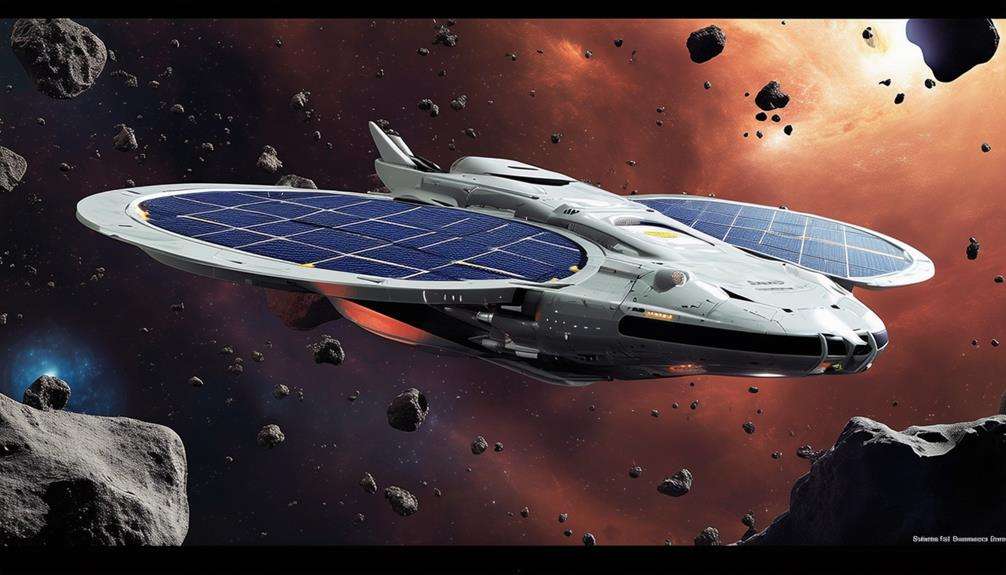
Over the years, space drones have evolved from simple observational tools to sophisticated machines capable of performing complex maintenance tasks in space habitats. Initially used for capturing images, these drones have now transformed into advanced units equipped with cutting-edge technology. Modern space drones handle intricate jobs like repairing equipment and cleaning solar panels, ensuring that space habitats function smoothly.
These advancements are largely due to the integration of advanced sensors, such as high-resolution cameras, lidar systems, and GPS modules. Cameras provide detailed images for inspections, while lidar systems enable accurate mapping and terrain recognition, essential for both exploration and surveillance. GPS modules enhance the drones' autonomous navigation capabilities, allowing precise maneuvering within the vast expanse of space.
Autonomous navigation is a revolutionary feature, enabling drones to perform tasks with minimal human intervention. This not only boosts efficiency but also mitigates the risks associated with human spacewalks.
In space habitats, drones are crucial for efficient data collection and real-time monitoring. By incorporating these advanced technologies, space drones have become indispensable tools that significantly contribute to the safety and upkeep of space missions.
Key Applications
Drones are crucial for planetary surface mapping, utilizing advanced sensors to create detailed topographical maps. They also collect atmospheric data, offering essential insights into weather patterns and climate conditions on other planets. These applications not only enhance our comprehension of extraterrestrial environments but also facilitate safer and more efficient space missions.
Planetary Surface Mapping
Planetary surface mapping with drones revolutionizes our understanding of extraterrestrial terrains by capturing high-resolution details essential for scientific and exploratory missions. This advanced technology allows for precise mapping of planetary surfaces, revealing intricate geological features and terrain variations that might otherwise remain undetected.
Equipped with sophisticated mapping sensors, drones can gather critical data on the surfaces of other planets. This information is vital for identifying geological formations, evaluating potential landing sites, and understanding environmental conditions. Additionally, drones can generate detailed 3D models of these surfaces, providing invaluable insights for scientific research, exploration planning, and resource identification.
Using drones for surface mapping reduces the risk to human explorers by efficiently covering large areas, collecting data that would take much longer to gather manually. Autonomous drones offer a cost-effective and versatile solution, making planetary surface exploration more feasible and thorough.
As we continue to push the boundaries of space exploration, drones will play a pivotal role in enhancing our knowledge and capabilities beyond Earth.
Atmospheric Data Collection
How are drones transforming atmospheric data collection on other planets, providing crucial insights for space exploration?
Utilizing advanced sensor technology, drones can investigate the composition and dynamics of extraterrestrial atmospheres. They're essential in examining weather patterns, atmospheric pressure, and temperature variations, which are critical for planetary exploration.
Drones, outfitted with sophisticated sensors, can detect trace gases, aerosols, and various atmospheric constituents. This data collection is vital for understanding the climate and assessing the potential habitability of other planets. The capability of drones to operate at different altitudes enables them to gather comprehensive atmospheric data, offering detailed insights that static landers or orbiters can't provide.
Key benefits of using drones for atmospheric data collection in future space missions include:
- Detailed Analysis: Drones supply in-depth atmospheric data, aiding in climate studies, weather forecasting, and habitability assessments.
- Versatile Altitude Range: Their ability to function at varying altitudes allows for a thorough atmospheric profile.
- Advanced Sensors: Equipped with cutting-edge technology, drones can detect and analyze trace gases and aerosols essential for understanding planetary atmospheres.
Design and Engineering
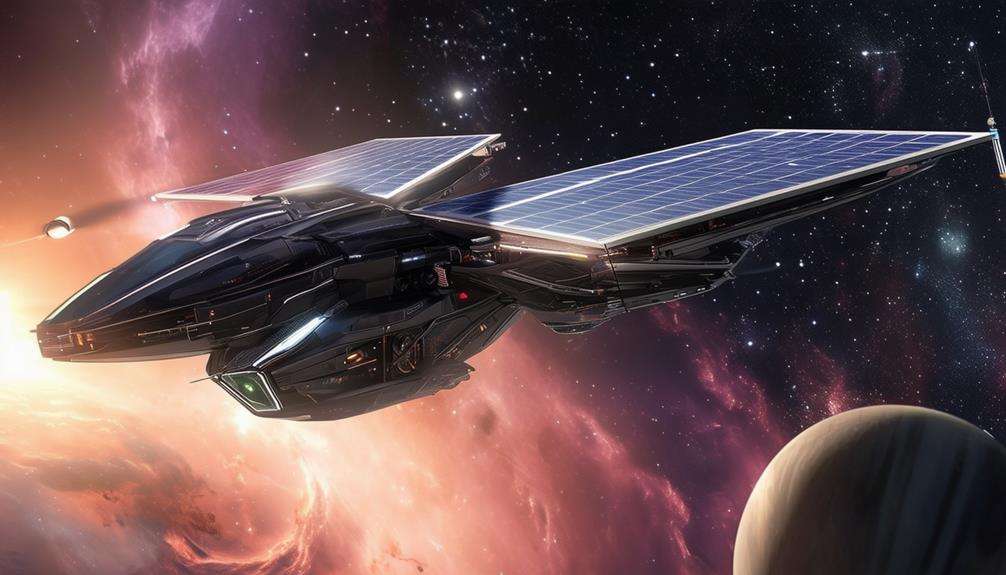
When designing space drones, it's crucial to address the challenges associated with lightweight materials and advanced navigation systems. The materials must withstand harsh planetary atmospheres while minimizing weight.
Additionally, integrating precise navigation systems, such as those using GPS or other satellite-based technologies, ensures that the drone can autonomously explore and collect data effectively.
Lightweight Material Challenges
Engineers encounter significant challenges in selecting lightweight materials that can endure the extreme conditions of space exploration. For space drones, the stakes are high. These materials mustn't only be light enough to facilitate efficient travel but also robust enough to withstand temperature extremes, radiation, and varying atmospheric pressures.
Typically, three main materials are considered:
- Carbon fiber composites: Renowned for their strength and low weight, these materials are frequently used in space drone construction.
- Titanium alloys: Providing a good balance between weight and durability, these alloys are resistant to corrosion and high temperatures.
- Advanced polymers: Lightweight and engineerable to resist radiation, making them ideal for space environments.
Selecting the appropriate materials is crucial as it directly affects the drone's performance, durability, and ability to survive the harsh conditions of space. Engineers continually innovate in lightweight material technology to enhance the efficiency and effectiveness of space missions.
Understanding these material challenges offers insight into the complexities of designing and engineering space drones capable of navigating and operating beyond Earth.
Advanced Navigation Systems
As engineers perfect lightweight materials for space drones, they also focus on designing advanced navigation systems that ensure precise, autonomous operations in the vast and unpredictable cosmos. These systems rely on GPS, lidar, and inertial measurement units (IMUs) for accurate positioning and orientation, which are vital for tasks like autonomous flight and obstacle avoidance.
To ensure reliability, redundancy, and fault tolerance must be considered. The risks associated with single points of failure in space are significant; a malfunctioning critical sensor could jeopardize the entire mission. Therefore, advanced navigation systems often incorporate multiple sensors and fail-safes.
Power efficiency is another crucial factor. Space drones must be power-efficient to sustain long-duration missions. Integrating artificial intelligence (AI) algorithms aids in real-time decision-making and adaptive path planning. These algorithms process data from diverse sensors to provide accurate mapping of planetary surfaces.
Engineering challenges include sensor fusion, where data from multiple sources must be seamlessly combined, and managing communication delays due to the vast distances involved. Software reliability is paramount; any glitches can lead to mission failure.
Deployment Techniques
Space exploration drones are deployed using various specialized techniques tailored to specific mission objectives and environments. One prevalent method is through Unmanned Aerial Vehicles (UAVs), which are released from spacecraft or other aerial platforms to navigate and gather data from the atmosphere or surface of celestial bodies. This approach is particularly effective for exploring regions that are otherwise inaccessible or hazardous for landers or rovers.
Another technique involves integrating drones into rovers, enhancing their exploration capabilities on planetary surfaces. These rovers can traverse long distances, collect samples, and transmit data back to Earth, while the drones offer an aerial perspective and access to hard-to-reach areas.
Lastly, there's lander deployment, where drones are attached to a lander and deployed once the lander has safely reached the surface of a planet or moon. This method ensures that the drones can commence their mission with a stable base of operations.
Each deployment technique offers unique advantages and limitations, making the choice critical for mission success.
- Aerial Deployment: Releasing drones from spacecraft for atmospheric or surface exploration.
- Rover Deployment: Integrating drones into rovers for extended exploration on planetary surfaces.
- Lander Deployment: Attaching drones to a lander for deployment upon surface landing.
Power and Propulsion
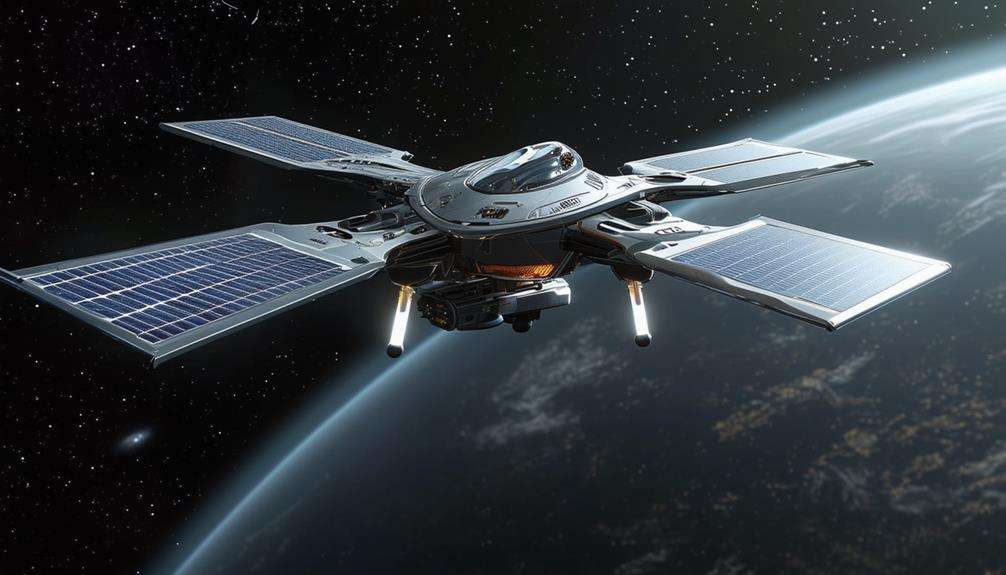
Power and propulsion systems are crucial for space drones to execute intricate maneuvers and sustain long-duration missions. To ensure your drone operates efficiently in space, consider various power sources, including solar panels, nuclear power, and rechargeable batteries. Solar panels are ideal for missions with ample sunlight, while nuclear power sources, such as radioisotope thermoelectric generators (RTGs), are essential for missions with limited solar exposure.
Electric propulsion systems, such as ion and Hall-effect thrusters, are preferred for their efficiency and extended operational lifetimes. These systems enable your drone to travel greater distances while consuming less fuel. For precision maneuvering, cold gas thrusters and reaction wheels are critical, particularly in microgravity environments.
Here's a comparative overview of power and propulsion options:
| Power Source | Propulsion System | Key Advantage |
|---|---|---|
| Solar Panels | Ion Thrusters | High efficiency in sunlight |
| Nuclear Power (RTGs) | Hall-effect Thrusters | Continuous power in low-light areas |
| Rechargeable Batteries | Cold Gas Thrusters | Quick response for short missions |
| Solar Panels | Reaction Wheels | Precise orientation control |
| Nuclear Power (RTGs) | Ion Thrusters | Extended mission duration |
Understanding these systems will help you optimize your drone's capabilities, ensuring it can navigate planetary atmospheres, investigate surfaces, and transmit data efficiently back to Earth.
Navigation Systems
Controlling space drones requires precise systems like GPS modules, lidar sensors, and inertial measurement units (IMUs) to ensure accurate location tracking. These advanced navigation systems enable autonomous navigation and obstacle avoidance in challenging environments, such as the rugged terrains of planetary surfaces. Drones rely on sophisticated algorithms and sensor fusion techniques to maintain accurate positioning and conduct safe flight operations.
Key components include:
- GPS Modules: These provide real-time location data, crucial for operations in vast and unfamiliar terrains.
- Lidar Sensors: These map surroundings and detect obstacles, ensuring safe and efficient navigation.
- Inertial Measurement Units (IMUs): These track the drone's orientation and motion, enhancing stability during flight.
Integration of communication systems is also vital, allowing for real-time data transmission and remote control during missions. This capability ensures that drones can relay critical information back to Earth, enabling scientists to make informed decisions on the fly.
Navigation systems are indispensable in space exploration, facilitating scientific exploration, mapping, and reconnaissance on planetary bodies. Future advancements in navigation capabilities are essential for tackling increasingly complex missions.
Future Prospects

In the near future, autonomous drones will significantly impact space exploration by performing tasks too risky or time-consuming for humans. For instance, these drones could explore the far side of the Moon, where direct communication with Earth is challenging, by mapping terrains, gathering samples, and setting up instruments, thus preparing the way for astronauts to arrive safely.
An exciting prospect is using drones for planetary defense. They could identify and potentially divert hazardous asteroids, safeguarding Earth. Additionally, drones equipped with 3D printing technology could construct buildings and infrastructure on other planets or moons, making space habitats viable for human occupation and reducing the need for heavy, costly cargo missions.
Advancements in autonomous navigation and battery technologies will enhance drones' capabilities, allowing them to operate efficiently in harsh space environments. These drones can autonomously transport cargo, delivering crucial supplies to astronauts on long missions, thereby reducing human risk and mission costs.
Conclusion
You have explored the remarkable evolution and essential applications of drones in space exploration. By understanding their design, deployment, power systems, and navigation, we can appreciate their crucial role in investigating extraterrestrial terrains.
These innovative machines enhance mission safety and efficiency. As technology progresses, the future for space drones is promising, with potential for groundbreaking discoveries and expanded horizons beyond Earth.
Stay tuned, the most exciting developments are yet to come!

